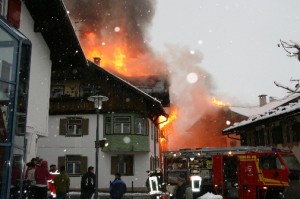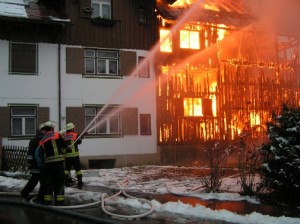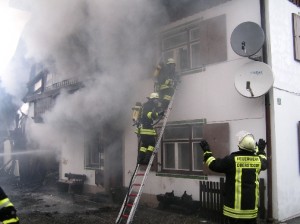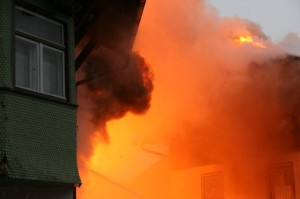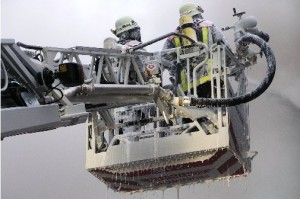When Flames Spread to a Neighboring House – It Doesn’t Take Long
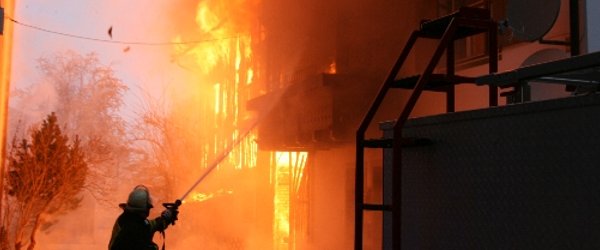
Source: Oberstdorf Fire Department
While reading historical documents, it’s hard not to notice how many cities ended up in flames. In our highly technological world with its variety of fire protection regulations, this is practically unimaginable. But a major fire a few weeks ago in Oberstdorf proves that it doesn’t take long for a fire to get out of control.
Particularly for young firefighters, insulating a building is probably one of the lamest jobs out there. Some building next door is engulfed by a total fire while you are busy sprinkling the neighbor’s house with water. But an incident involving the Oberstdorf Fire Department shows just how important that job actually is. When the Oberstdorf VFD arrived at the scene, a stable in the center of town was already fully engulfed by fire and had spread to the roof of the neighboring house. Here you can see how quickly things can happen when adjoining buildings are not insulated. The firefighters at the scene stated that the radiated heat was at such a high level that windows 50 meters away were bursting. A couple of the firefighters even felt the enormous heat inside the fire truck when they were approaching the scene.
I’ve never experienced this kind of incident scenario. There were certainly a couple of buildings engulfed by total fire occasionally, but never a fire that had already spread to other buildings. To make things even more difficult for the first Oberstdorf firefighters at the scene, 11 people had to be evacuated. But let’s take a look at the possible dangers, because when it comes to this incident, we can answer quite a few questions with “yes”:
Fear response: yes -> the people in immediate danger, and possibly the firefighters themselves (stress)
- Breathing poisons: yes
- Atomic dangers: no
- Spread: yes
- Chemical substances: no (possibly fertilizer, but rather unlikely since the smoke is black/gray)
- Explosion: no
- Sickness & injuries: yes -> people (smoke inhalation)
- Structural collapse: yes -> burning stable
- Electricity: no -> at least the pictures don’t show any power lines
Just in case you were wondering why I mentioned the firefighters under “fear response”: Certain incident scenarios can be quite stressful for firefighters. In the above-mentioned situation, the group leader in particular is responsible for creating a sense of calm and structure at the scene of the incident, in spite of the adverse circumstances. Otherwise, uncertainty would spread throughout the team, and the incident would become even more chaotic.
But in my opinion, the most important aspect here is the danger the people who have to be evacuated face as well as the spreading of the fire. This means that the majority of the team will be dealing with the rescue, and one team will start fighting the fire that’s raging at the adjacent building. That’s probably going to have to do it at first. Oh, and the group leader or machinist should make sure that all vehicles are parked at a safe distance; nobody wants to end up putting out his own burning fire truck. J
I’d love to know whether or not you guys have experienced an incident like this before and what the initial attack was like?
A big thank you to Thomas Speiser at the Oberstdorf VFD for all the information and pictures.
More Pictures
Tags: fire, incident, oberstdorf
